

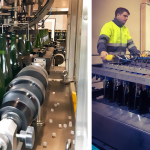
From the offices of our winery, today, we begin to hear the tinkle of glass bottles. A distant sound that does not bother, on the contrary, awakens in us the curiosity to go down the stairs and see what is happening in the production line. We hear the news of a colleague who says: “The tirage has already begun!” Opening the door, we perceive first the smell of fresh jasmine and field flowers and we find our colleagues, who frantically and laboriously move from one part to the other of the production line in an indefatigable way, controlling that everything follows correctly. They will dedicate a lot of time, until March, to one of the most important phase of cava’s elaboration. It deals with a process, which consist of filling the bottles with base wine and the “tirage liqueur”, composed of yeast and sugar. The same yeasts will be the unquestionable protagonists of the second fermentation within the same bottle.
Once this process is finished, the bottles will be lowered into the darkness of the cellar, placed in the “rimas” position (horizontally). Our colleagues know very well that a season of hard work begins for them. When we watch television or listen to news about industries, factories, workers, the message we receive is quite sad. It is thought that there are no workers anymore because on the screen there are only images of technological robots that move pieces. The images of the workers are never there. However, for us the worker is the point of support and departure of everything, the embodiment of the success of our products. At six o’clock in the morning, our team starts its workday. Rightly, at this time, our colleagues are still a little sleepy. Before 7 am, few words are exchanged and if a question is asked, the answer comes after a few minutes, because everyone is very focused on the work to be developed, aware that, on the other hand, there is a great responsibility: the success of our winery.
At eight o’clock, all are already awake, active and full of energy and with a resplendent smile, they welcome the other part of the workers team, who begins the shift.
This is the most beautiful moment of the whole day, the meeting of each member of our winery. They, already awake for hours, wish the best day to others, minimizing their fatigue. The tiredness is heard, but not as a complaint, but as proof of the great involvement and dedication that our collaborators adopt, every day, every hour, every second …
The rest will accompany our product during a certain time so that little by little, without haste, it will mature its gestation months later. Great things need their time and our great products get the care, affection and time necessary to get their personality.
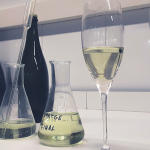
The oenologist’s work, in the process of elaborating a cava, is an arduous and responsible task. He, throughout the year, assumes completely different functions and must remain alert to each type of process. In the steps prior to mixing varieties, the oenologist’s role is similar to that of an orchestra director, it is he who gives his approval to start the collection of the grape, it is he who chooses the yeasts to be used for the alcoholic fermentation, and it is always he who controls almost obsessively and restlessly that the temperature of the tanks remains stable and, during all this time, he does not close his eyes at night, and if he does, it is only to dream about his wines and about the next steps to do to get a product of excellence. However, at this time of year, our winemaker assumes a much more complex, mystical and magical role. It becomes the true creator, who molds, with everything he has at his disposal, his raw diamonds, the wines, which he will have to polish little by little in the following steps to obtain our cavas of optimum quality. The hand of the winemaker is seen in the blend of the wines, mixing the different components that constitute a finished product. It is very difficult that a base wine obtained in a single harvest and coming from a single vineyard and from a single vine variety can provide the perfect aromatic balance and the level of sugar and acidity necessary to produce an excellent cava. This is why we usually mix different varieties of still wines, in our case, always from the same vintage, producing Vintage Cavas every year. This procedure is carried out directly at the end of the first fermentation and is considered the real key in the art of cava production. What we are looking for in our winery is to contribute what is missing to a component with one that has it, something like leveling the lame leg of the table, to achieve complexity and originality in the finished product. Due to the long aging on the lees of our cavas, our winemaker has a difficult task, since it is difficult to predict the result of the mixture. There is no chemical formula in force to know how to get it, this is intrinsic to the considerable experience of our technicians, their knowledge, their philosophy of product style and their magic touch;).
The initial blend of still wines in the denomination of origin Cava involves the use of 9 varieties of grapes such as Macabeo, Xarello, Parellada, Chardonnay, Malvasia, Trepat, Garnacha, Monastrell and Pinot Noir, to give life to a wine that is subjected to a second fermentation, the key passage in which the perlage (bubbles) is formed in the cava.
To make a blend we need (and certainly we have) a team of tasters of great experience, sensitivity and finesse, who as composers must be able to perceive the particularities of each individual element to put it in value in its entirety. They have to be visionary, creative and be able to imagine what they want to achieve, thinking about how to improve and how to make the product exponentially more attractive, staying anchored to the style of our winery.
The secret is to choose expressive base wines from the point of view of softness, warmth on the palate and acidity. According to our experts will be chosen which way to undertake, opting always for obtaining a fine, sophisticated and well-integrated bubble and reaching very elegant finishes with great complexity in the aftertaste. The variations are endless and the tasting of the blend is a discipline that requires rigor, knowledge, ability to perceive the future and must be nourished by a great passion.
Professional tasters or simply CAVA ENTHUSIAST, we are intrepid to know how we will evolve our 2018 vintage.
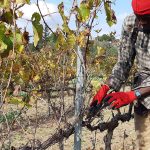
This week we have started with the pruning of the vines, a very important process that will determine the quality of the grape, and as a consequence the quality of the wine of the next harvest. That is why we can affirm that pruning is one of the most important tasks carried out in the vineyards throughout the year. But … What does it really mean to prune?
It deals with a meticulous job that consists of cutting the ramifications of the strain to prevent it from growing in an uncontrolled way. The period to do it goes from mid-November to the end of February (depending on the area and the vine-grower). This is the best period because it is when the vine goes into winter recess, that is, it minimizes its activity.
The objective of pruning is to leave an optimal number of buds to obtain a good quality of grapes in the future harvest.
The plant of the vine is not as we are used to seeing it in the vineyards. It is really a long-branched shrub that grows by clinging to other trees and distributes its fruits in a completely random way. Therefore, pruning is essential to control the plant, but also to shape it we regulate the production and ensure a good harvest.
In short, pruning is one of the most important operations for the subsequent obtaining of good grapes, and a good balance of sugars and acidity in ripening and will define many aspects of the next harvest.
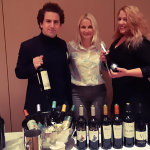
The trip with our Wine Discovery distributor is over, like all beautiful things. We can only live from the memory of the experiences lived with this magnificent team of professionals, energetic and positive people, and deep connoisseurs of Wine market.
The question that came to us as soon as we landed in Moscow was: How can we survive such beauty?
In Moscow, there are three ways to survive the winter: firstly, to put on the ušanka, the typical Russian hat, secondly to enjoy vodka and thirdly to get lost in the literature, art and history of this enigmatic country.
We have chosen this last option. We did not stop at the memories of the novels we read at school, but we faced the cold and spent our short moments of free time in the places of poets and writers who left a lasting and authentic footprint in the history of the entire world.
People must savour Moscow and visit it with all tranquillity, starting with the most famous places to look for the most remote corners that hide unique beauties.
Everything started from the famous Red Square, which houses cathedrals, museums and complexes rich in history and culture up to the Cathedral of San Basilio, known throughout the world for its colours and its multiple cover in the form of onions. The acrid air reddened our cheeks and gave us the vitality of walking to Pushkin State Museum of Fine Arts and Lenin’s mausoleum, in which the body of the famous politician is in a glass coffin. The last stop was Patriarshiye Prudy, a wonderful park famous for the meeting between the master and Margarita, and after the walk through this artificial lake, we reached the famous bar Margarita, to taste the delicious aromatic chai (thé) that warms the body. In this artistic place, we lost ourselves in the conversations of the eccentric visitors, in the wise speeches that warm the heart instead of the body.
Right in this city of history and modernity we witnessed the event “Salon of Spanish wines” in the famous Telegraph, accompanied by the Training Manager Elena Gurikova, a charming woman, always concerned about us, attentive to our well-being, exquisite, very pragmatic and fast in the impeccable organization of our stand.
Wineries such as Iniesta, Avelino Vegas, Sommos, Nabal, Protos, Marqués de Cacéres, Viña Vilano, Codorniu, Gonzalez Byass, Grupo La Rioja Alta, Pago Heredad de Ureña, Viña Ijalba, Vinoterra, Raventos, and Juve and camps attended the event.
The influx of people was extraordinary, with good feedback from the tasters who appreciated our Cava Mont Marçal rosé with its delicacy, due to the freshness of the rose petals, those petals bathed in the morning dew, our sophisticated Brut Nature Extremarium, elegant and vigorous, and our Mont Marçal cuvé noir, where the carbon is in a fantastic balance and adapted to all occasions.
The Chief Natalya Bukata, a determined, professional, knowledgeable and quality-loving woman gave us a general and satisfactory vision of Wine Discovery. It was extraordinary how we fit into the way we work and achieve high goals. For its part, she is very satisfied in communication and organization and, for our part, we are delighted of the rigidity and perfection in the way of managing all processes: together we are an indestructible machine, a machine where all the gears work perfectly and, with the necessary care, it will continue to work.
The second stop of the Spanish Wine Hall was in St. Petersburg. The history of this city is full of events, and even today the city seems to oscillate constantly between a very recent past, to which all Russians are inevitably anchored, and advanced modernity. This is the story of a city born in 1703, about the “decree” of Tsar Peter I, also called Peter the Great, who wanted to make the new capital of the Russian Empire from the swampy banks of the Neva River.
“This is not a place for man because men are not fishes,” Prince Menshikov told Peter I.
Shortly, after becoming capital (just in 1712), St. Petersburg literally had to invent a past, which obviously had no, and did it thanks to the intellectuals who populated the city over the centuries to come. Authors such as Alexander Pushkin started to reinvent the city, to give it a soul, to capture its atmosphere until it became a mythical city, at the same time idolized and suffering, source of love and cause of pain.
The event took place in a modern centric building, in the company of a sensational team.
The manager Irina Loseva, faithful companion that we describe with two words: patient and scrupulous. Alert and careful of all the details so that our stand stood out in prestige and increased the value of the products. The General Manager Dmitry Bezdetko, a measured and observant man, the Regional Managers such as Anatoly Kurto, a nice and energetic figure, Evgeniy Druzhinin, the soul of the festival with his joy, good humour and wisdom and his excessive love for our cavas, and Sasha, a dynamic young and active person, knowledgeable and charming that attracted a lot of people due to its interesting technical explanations. Only thanks to the help of this formidable group, we were able to achieve the desired success, finishing our range of products very quickly ….So we deserve a fantastic Russian-style dinner!
The last stop was Ekaterinburg, a mystical and mysterious city. From an abandoned village of miners, it has grown to become the third largest city in Russia. For several decades, it was a closed territory, whereas today it is a strange megalopolis full of mysteries and anecdotes, which seems to live in several dimensions.
The monuments of Ekaterinburg could cause a cultural shock to any tourist.
Among many buildings and sculptures, we remember the monument dedicated to Invisible Man, represented by a series of impressions of different sizes; the monument to curiosities; the keyboard monument and, finally, the one devoted to love, a 7-ton rock made of pink rhodonite and extracted in a local deposit. Without forgetting that Tsar Nicola paid in this city the errors committed by his ministers and by himself.
The event took place in the luxurious Hyatt Regency Hotel, with a high participation and a more technical audience, expert restaurateurs, sommeliers and distributors.
There, Aleksey Rybkin,, the Responsible of the Urals Region, introduced us to restaurants and wine shops where we just entered with our portfolio of products. After an entertaining day, we armed ourselves with energy deciding to visit these places in order to present and enrich with our explanation the range products. We used only two support materials: power point presentations and … a lot of enthusiasm!
The most difficult part now is waiting to go back to work side by side with Wine Discovery … but meanwhile, we will plan something, probably an imminent visit to our Bodega Mont Marçal.
In this way, we do not have to wait so long and we can follow our project together, side by side, soon!
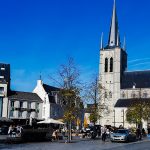
The central position of Belgium in Europe, a true crossroads of the Latin and Germanic world, multilingualism and political, social and religious freedom have contributed to the cosmopolitan character of the country. Belgium is today a multicultural society based on tolerance and mutual respect. This wonderful country, of which we are increasingly in love, has many pearls that are the fruit of great architectural currents. In the middle Ages, cathedrals and belfries are built, monuments that still adorn the cities of Belgian art.In the twentieth century, Brussels became the capital of art nouveau, thanks to the combination of all these elements, which determine the inestimable architectural wealth of the country.
Belgium also owes its success to other factors: a highly skilled, multilingual and flexible workforce, the proximity of international decision-making centres based in Brussels, multiple financial and fiscal incentives, affordable real estate prices, a long tradition of hospitality and excellent social security. We speak of a hospitable country chosen by many immigrants from different countries who, with hopeful eyes, have seen Belgium as a mirage, a flash of confidence, leading them to establish themselves in the nation. Here, in all epochs, important intellectuals and personalities have found refuge, such as Karl Marx, Victor Hugo, Alexandre Dumas, Charles Baudelaire, Auguste Rodin.
Driving between this pure and intact nature, characterized by large forests, our Export team identify itself in the stillness and landscape beauty of this nation, where deer and hares cross the road without fear, and where the birds approach to get food, knowing that no one will hurt them here, because respect for any living being is a priority and a moral duty of the Belgians.
Our destination is Geel, a city of 40,000 inhabitants, one hour far away from the capital.
Since the 13th century, Geel has been the largest open therapeutic psychiatric community in the world.
In fact, it is near the sanctuary of Saint Dinfna (a girl of Irish origin who chose martyrdom in the seventh century AD not to give in to the incestuous intentions of the father), who is known to treat mental illnesses in particular and protect family assistance.
Throughout its history a network of generalized assistance was formed, a kind of asylum that has fascinated visitors of all times and be cited continuously as a model for therapeutic communities with a view to the deinstitutionalization.
Attracted by these methods of treatment, Vincent van Gogh’s father also thought of sending his son to attend the cures provided in Geel. Here, we attend the event of Serge van Lommel, owner of the AD VINDUM store specializing in different styles of wines from around the world: South Africa, California, France, Italy and Spain have to share the shelves of this beautiful store, decorated in all the details, not only from the visual point of view, but also from the emotional point of view. Yes, because Serge, together with his wife Suzanne, not only sell wines, but also sell emotions, love for what they do, continuous effort, perfection and hard work. With great fatigue, we refer to the fact that both do not stop for a moment, their energy is indomitable, indescribable with words, but only with images. When Serge picked us up at the hotel and took us to a beautiful wooden country house in the middle of nowhere, where the tasting took place, every 5 minutes he got out of the car and, dressed in his elegant suit, without fear of getting dirty, he put the signs that showed people how to get to the event. Serge with his hammer, his panels and so much hope is what will stay engraved in our heads, a very easy-going man…ready for everything!
A wonderful country house has been our home on 13th and 14th of October, days of typical Belgian temperature, plenty of sunshine and 27 degrees! ☺
Tasting is the art of using the senses to discover and appreciate wines and cavas. Thanks to the use of the five senses, you can learn to perceive the tiniest nuances of flavour and aromas, beginning to appreciate the origin of the grapes, the importance of terroir and microclimate to the finished product, for this reason an event more focused on people truly interested in a remote place, has been ideal.
Everything was impeccably organized; our table of the entire Mont Marçal range was located right in front of the entrance, between Flemish paintings and old wine making utensils, being the first stage of the customers, who arrived. The influx of people has been surprising, considering that it was a very hot weekend for the Belgians, who unbelievers enjoyed cavas and wines outdoors in a Renaissance style garden among flowers and old bushes. After moments of high intensity of affluence and of goliardic moments with the guests, the tasting of our products had an exponential success. The most appreciated products were our Grand Cuvé Reserva, our Mont Marçal Brut and … our masterpiece product Aureum. Using PowerPoint presentations of more general explanations about the process of making the cava, the used native grapes and more specifically our products, people were impressed, acquiring even more knowledge.
Belgium is a very important market for us, the Belgians are connoisseur and curious tasters, they know how to consume our products and how to pair them with their exquisite local gastronomy. The most remarkable aspect was the retention of visitors, most of those arrived at the beginning of the event and stayed until the end, a very positive signal that translates as something important, people were at ease, in harmony with the others and in a friendly environment, so much of spending the whole day there.
We will take in the heart the sweetness of Suzanne, always accompanied by her faithful Chihuahua Oesie, the kindness of two other collaborators who helped us from the organizational point of view, and the energy, the optimism and the fun of Serge.
We hope to see them soon, probably in the next event in March.
Hartelijk dank AD VINDUM!
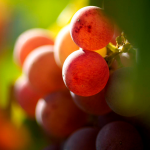
The end of the harvest is the end of a great emotional tension.
The grapes are now in the tanks, ready to ferment and we know that it is time to clean the tools used to harvest and let them rest, for a year, in a remote corner of the cellar and rinse the boxes stained red, because of the skins of the harvested red grape. The collection is one of those instants that stops time and marks it. End of August, September and October are months of frenetic pace and intense work. The tractors decelerate and move at a slow and linear pace crossing the main roads. In this time everything is permitted, even the most demanding drivers, are less intransigent and patient because, although in a hidden and inexpressive way, the hearts of people are sensitive to beauty and the revealing power of nature, which again, has delighted with the fruits of his land.
The end of the harvest is a celebration and, at the same time, a theatrical performance imbued with poetry. The oenologist, with his experience, is the orchestra conductor of this great “pièce” that reached the end, and the winemakers and technicians are the dancers of this pantomime, who, with their repetitive and agitated movements, arrive at the apotheosis moment: the end, the confrontation and the manifestation of the evidence of what happened in the vineyards.
Nowadays, differently from what happened in the past, in the collective imagination the end of the harvest is experienced as a moment of change: the prodigious transformation of solid matter into precious liquid, after fatigue to achieve it.
The winery returns now to its calm, the fermentations advance in an apparent immobility that hides a deep mystery (it is only at the end of this process that we can have a real idea of the harvest), the vineyard begins its deserved rest with its already golden leaves and the sunset advances every day more.
The responsible work carried out by our brilliant team, previously carried out and mainly aimed at preserving the health and future development of our ecological vineyards, allowed us to collect a large part of the productive potential of these. The grapes reached the correct degree of maturity, enjoying good health: in fact, the samples analyzed were considered adequate for the production of outstanding base wines for the consequent obtaining of excellent Cava Reserva. Our celler obtained a good quality of Garnacha, Macabeo, Pinot Noir and Xarello, although the Parellada variety had less production in terms of quantity, showing itself, in any case, well structured and with a good potential to develop.
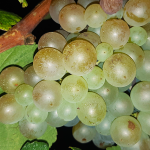
On Saturday 15th of September, it was the right time to harvest manually our red Garnacha. A grape variety of medium-early maturation that stands out for its great capacity of resistance to extreme temperatures and adaptation to poor soils.
A very versatile variety that confers good body and primary aromas such as wild fruits, roasted nuts and black cherries, features that will be the protagonists of our future wines and cavas.
This year, Penedès verified a more Atlantic climatology than a Mediterranean one, with the consequent problems related to this situation. Mildew, the disease most feared by vine growers who work in the vineyards near the sea, was the most dangerous problem in the DO Penedès. As regards our Lacrima Baccus winery, we rejected part of the production to continue guaranteeing the same level of quality and high standards to our consumers, an indisputable priority of our company.
The rains of February and, especially of March, marked the microclimate of Penedès. The spring temperatures were lower than usual and this became an advantage, slowing down the spread of the disease. The mildew moved silently without showing its typical signs and, as soon as it had occasion, attacked with severity.
Acting quickly, our team was able to extinguish the plague by carrying out a proper planning of the phytosanitary treatments and intense work of vegetation management.
The time of the harvest of the Garnacha have been decided based on phenolic maturation, so we opted for these dates and for a cool and endless night for our team of technicians, who works frantically. This image of industriousness will remain engraved on our heads; it seemed that there was a multitude of ants striving uninterruptedly in groups so that everything went as well as possible. The work of a year played an important role in this moment and only as a team and with an adequate planning of the tasks, we can achieve the optimal results expected.
Next weekend, around 22nd of September, it is planned to begin the collection of the Parellada, of later maturation. A variety whose cluster is very large, with very marked shoulders, homogeneous berries and whose primary aromas are fruity notes of white fruit, highlighting the citrus and floral touches. As usual, the collection will be done manually and at night, in this way, thanks to the low temperatures, the fermentation does not start without our control.
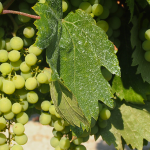
Harvest means trembling leaves tending to the colors of autumn, golden or orange colors and hearts hunched and hopeful. With the beginning of autumn and the first rains, the moist soil mixes its aromas with the aromas of ripe grapes. The wind sweeps great white clouds, which contrast with the intense blue sky. The atmosphere is cheerful; the harvest is a tradition that is repeated every year, with the unaltered peasant spirit, typical of our region.
2018 has been a rainy year especially in spring, more specifically in the month of March, where the data mark a high rainfall. From the agronomic point of view, the development of the vineyards, initiated under the best auspices, was conditioned by a strange climate that altered the frosts, the rains and the humidity. Therefore, it will be the year in which the capacity of our winemaker will make a difference in the result.
The recent lowering of temperatures has helped to increase the good quality of the grape and its maturation, after a long period of excessive heat. This has allowed the ripening cycle to slow down to ensure a good harvest development.
Due to the weather conditions that our vineyards have suffered, a reduction in the harvest is expected, which will not affect the quality. In fact, the grape enjoys a great balance between freshness and maturity. The phytosanitary status is optimal and we hope that by dedicating the appropriate efforts and pampering each grain of the cluster with the same affection, we will obtain excellent wines and cavas. The harvest, which began on August 11th, seems definitely better than last year, where the drought had staged the entire vintage.
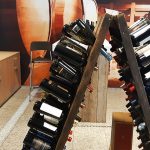
Next stop for our export team was the wonderful Netherlands, cradle of great culture and beautiful meadows, which extend throughout its flat topography, until reaching the height of the sea to the north and west! The first stage was Horst aan de Maas, about 20 kilometers from the German border, to attend the meeting of our big distributor Wjintransport.
They are for us a cozy family. Bas, Leen, Marc have a piece of our heart, their involvement and their commitment is so strong that we always have the same closeness. Bas, the executive director, gave us important information about our current situation in Germany and Netherlands. Everything is stable, with good forecasts like last year. The situation in Germany, a crucial market for what is the cava, which tends to collide with the native Schaumweine, is improving.
We started our journey to Salzgitter to meet the owner of EVM WEINDEPOT, Klaus Elblinger. From the outset, the friendly owner, together with his wife, in all sincerity admitted that the quality of our products is very good; they tried in their frequent trips to Spain different cavas and found none at the same height as ours in price –quality terms.
Encouraged and eager to show us the spaces for tasting, storage and leisure activities, Klaus accompanied us throughout his huge installation. In their portfolio, they dispose of different references such as limoncello, high quality grappas, brandy, cognac, whiskey, wines from Chile, South Africa, France, Portugal, Italy and Spain. The part dedicated to the tasting, with a capacity of 180 people, has a design with a typical German style, all wooden and the interior reminds a typical German “Kneipe”, with two huge and modern kitchens, which they use when they organize pairing, events and dinners. All the offices are in an annex building where the whole logistics and administration part is centralized. It was a pleasant meeting, they hope to keep more deal with us, do some event together and collaborate more side by side.
The second stage was Haibach to attend the appointment with the importer Getraenke Breunig, where the owner Joe Breunig attended us impatient. What to say, a very nice and friendly customer with an immense desire to learn and to dare to bring trend products and emerging brands of vodka, whiskey, gin, brandy, cognac, grappa and Porto. His philosophy is to touch all the ranges of a producer and thus give the client the possibility to choose what they prefer, depending on their interest, demand and economic availability. Our products include the Aureum, Mont Marçal Brut y Mont Marçal Rosé y los Marcelona blanco, tinto y rosado. This has been a meeting of knowledge, contact and exchange of opinions. Joe usually arranges his proactive team together. He takes us into consideration to give him support when he needs it, specially what tastings are concerned.
We continue to tour the great Germany to get to touch the splendid and youthful city of Mannheim Suedlandhaus Horst Beiderwieden is our destination. A very big store where products of different price ranges are sold. In their portfolio, they have more than 35,000 articles of food as well as Delikatessen. The portfolio ranges from oils, vinegars, tea and cereals to cognacs, gin, grappa, whiskeys, brandy, and wines. For them, the search for gastronomic products, which respect their criteria, is increasingly difficult since the globalization of artisanal products is already very advanced. However, as a family business, they attach great importance to a personal relationship with producers and are open to new proposals.
Finally, we ended the trip in Stuttgart to visit Hans and Oliver Schmid from Weinimport Handels. From the beginning, they pointed out their satisfaction in the type of collaboration and relationship that we established. They are lovers of the Mont Marçal range that easily fits the profile of customers they have in their region.
It is necessary to open an interesting parenthesis, in this trip we touched different regions, in this case Baden-Württemberg, and previously Niedersachsen and Unterfranken. Being Germany historically a Country of principalities and nowadays a Bundesrepublik, the differences between the regions are very marked, this means that the clients of a region are a world apart compared to the clients of another and this is a relevant fact to keep in consideration at all times.
This trip was very important for the entire export team. In this way, we have been able to present ourselves to clients by dissociating ourselves from the stereotypes they had of us and explaining the new reality of Mont Marçal.
We will see you soon dear Germany, land of opportunities, prosperity and respect. Auf Wiedersehen!
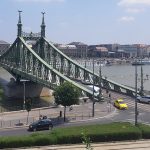
Hungarian culture is one of the richest cultures known in Europe. Hungary is a nation that for decades has been supervised by the Soviet influence, but nowadays, freed from this heavy burden, it is a country, proud that wants to show the world its tradition and its folklore without forgetting to announce the magnificence of its cultural and artistic heritage.
The mission organized by the Cambra de Comerç de Terrassa and planned by the expert in International Trade Montse Llimós Torres had positive results for our brand. In addition to our team, a Novell coffee commercial and a commercial industrial machine joined the market research mission in Hungarian lands.
It is important to keep in mind that Hungary is a very difficult market to penetrate. Strategically, it is a very central country which borders Austria, Croatia, Romania, Serbia, Slovakia, Slovenia and Ukraine and it is very important to be present, but we must bear in mind that apart from its political situation, Hungary is a quite protectionist country. The most important sectors for them, what the import is concerned, are the secondary and tertiary sector (machinery, services, technology).
As far as the wine sector is concerned, it should be noted that in recent years Hungary has experienced gradual growth, but also a reduction in the volume of imports and an increase in exports, being a reference country in the wine sector with its production of Tokaji. The Hungarian government and the companies themselves invest in advertising campaigns and use different means to attract attention to local wines.
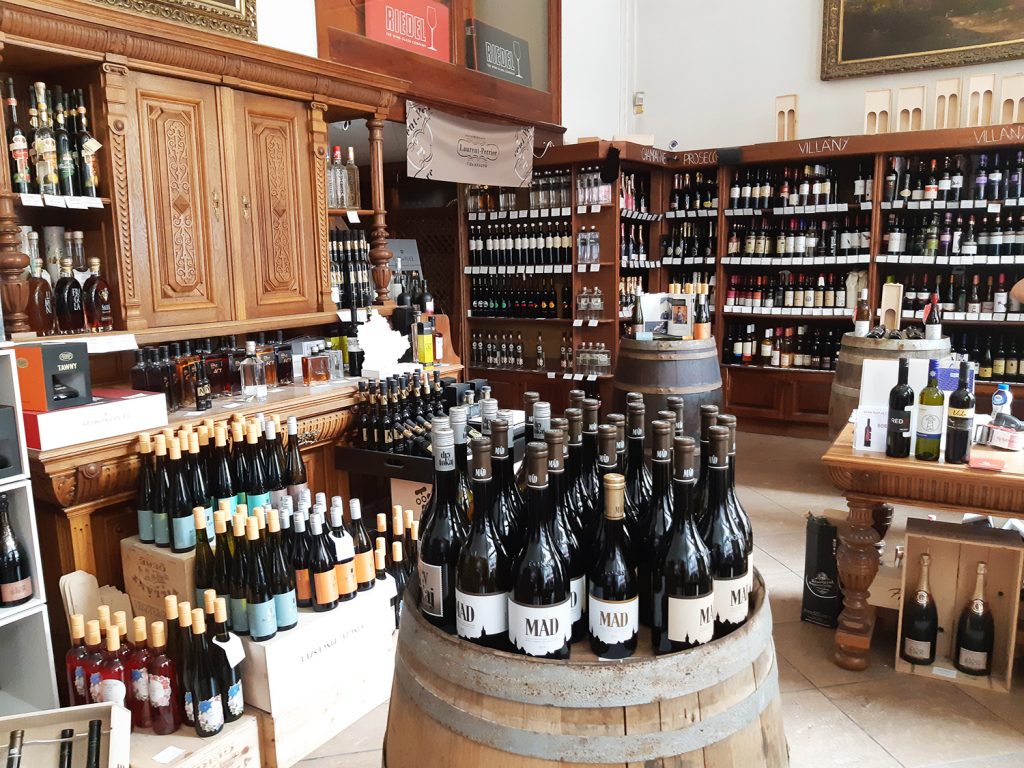
The price for the Hungarian market factor is decisive and it is considered that the value of Spanish wine is better than the Hungarian one. We can affirm that Spanish wine is more competitive and we have to seize this leads. Another reason for the presence of Spanish wines is the fact that it considerably increases the offer in a country where wine is a drink that is traditionally part of gastronomy. The white wines that our land offers are emerging in recent years compared to the consolidated red wines, especially those from the Rioja appellation of origin.
Cava is a bit delicate product to treat because there are sparkling wines that supply most of the consumption and, as Germany and Austria are the biggest importers, it is very difficult to penetrate. However, nothing is impossible!
Our export team met distributors, proposing its brand and comprehensively explaining the product portfolio, the processing techniques used and especially their vision and corporate values.
On behalf of the entire export team, we thank for the attention received during the cocktail at the Zenit in Budapest in honor of our presence at the mission. Major Sandor of the Economic and Commercial Office of the Embassy of Spain in Hungary who dealt with the organization of our agenda with professionalism and patience, theb market analyst Tibor and the commercial economic counselor of the Embassy of Spain in Budapest Susana de Ibarrondo and Guerrilla Echevarria.
Recent Comments